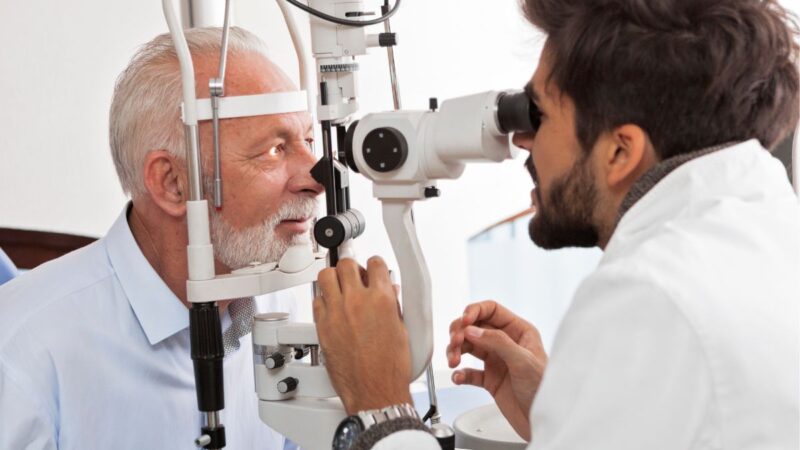Neurologist in Andalusia: Leading Specialists and Clinics Noted
Neurologist in Andalusia: Leading Specialists and Clinics Noted
Blog Article
The Pros and Disadvantages of Various Refractive Surgical Procedures for Enhanced Eyecare

LASIK Surgical Procedure
LASIK surgical procedure is a generally executed refractive treatment that aims to fix vision concerns such as farsightedness, astigmatism, and nearsightedness. During the procedure, a thin flap is developed on the cornea, and a laser is made use of to reshape the underlying tissue, remedying the refractive error.
One of the main advantages of LASIK surgical treatment is the rapid renovation in vision experienced by lots of patients. It is crucial for individuals thinking about LASIK surgical treatment to undertake a thorough evaluation by an eye care expert to identify if they are appropriate candidates for the treatment.
PRK Treatment
The PRK treatment, also known as Photorefractive Keratectomy, is a type of refractive surgical treatment that aims to remedy vision concerns similar to LASIK surgical procedure. Unlike LASIK, which includes developing a flap in the cornea, PRK functions on the surface area layer of the cornea.
One of the advantages of PRK over LASIK is that it removes the danger of flap-related difficulties given that no flap is produced throughout the surgical treatment. Despite the longer recovery duration, PRK can be a suitable option for individuals looking for vision modification surgical procedure.
SMILE Surgical Treatment
A cutting-edge refractive surgical treatment method acquiring appeal in the area of ophthalmology is SMILE Surgical procedure. Little Cut Lenticule Removal (SMILE) is a minimally intrusive treatment that corrects vision by improving the cornea making use of a femtosecond laser. Unlike typical LASIK surgical treatment, SMILE Surgical treatment includes creating a little incision in the cornea to extract a lenticule, which causes much less disturbance to the corneal framework and possibly faster recovery times.
Among the primary benefits of SMILE Surgery is its ability to deal with myopia (nearsightedness) and astigmatism with high accuracy, leading to exceptional visual end results for clients. The minimally intrusive nature of the procedure additionally minimizes the danger of problems such as completely dry eye syndrome, making it a positive option for individuals looking for refractive surgical treatment.

LASEK Method
Having actually discovered the benefits and considerations of SMILE Surgery, one more significant refractive surgery method worth examining is the LASEK Technique. LASEK, which stands for Laser-Assisted Subepithelial Keratectomy, is a form of laser eye surgery that aims to correct refractive mistakes such as myopia (nearsightedness), hyperopia (farsightedness), and astigmatism.
Unlike LASIK, LASEK does not involve developing a corneal flap. Instead, during a LASEK treatment, the doctor makes use of a diluted alcohol remedy to loosen the thin outer layer of the cornea, referred to as the epithelium. This layer is after that carefully relocated apart to allow the laser to improve the underlying corneal tissue. Once the cornea has actually been improved to the preferred level, the epithelial layer is repositioned.
Among the primary advantages of LASEK is that it can be suitable for people with thin corneas that might not be excellent prospects for LASIK. In addition, LASEK generally results in marginal post-operative pain and a quicker recovery time compared to PRK. Nevertheless, click to read more the visual recovery process with LASEK might be slightly longer than with LASIK.
Implantable Get In Touch With Lenses
Implantable Call Lenses supply a long-lasting vision correction service for individuals looking for a choice to typical contact lenses or glasses. These lenses, likewise understood as phakic intraocular lenses, are operatively placed right into the eye to remedy refractive errors such as nearsightedness (nearsightedness), hyperopia (farsightedness), and astigmatism. neurologist Andalusia. Unlike traditional call lenses that rest on the surface area of the eye, implantable contact lenses work within the eye itself, offering clear vision without the requirement for everyday maintenance or elimination
Among the vital benefits of implantable contact lenses is their durability. When placed, they can remain in the eye forever, offering constant and secure vision adjustment. Additionally, these lenses can be an excellent option for individuals who are not excellent prospects for laser eye surgical treatment or that choose a relatively easy to fix vision improvement procedure.
Nonetheless, implantable get in touch with lenses do lug some dangers, including the capacity for cataracts or enhanced eye stress. It is vital for people considering this choice to speak with an eye treatment expert to establish if implantable call lenses are the best option for their particular demands and eye health.
Conclusion
In conclusion, each kind of refractive surgical procedure has its very own benefits and drawbacks. LASIK surgery is preferred for its fast recovery time, while PRK procedure might be appropriate for people with thin corneas.
In General, SMILE Surgical procedure provides an appealing choice for individuals looking to boost their vision with refractive surgical procedure.
Report this page